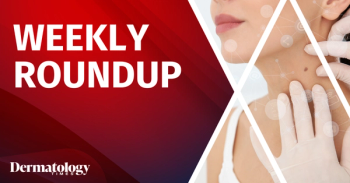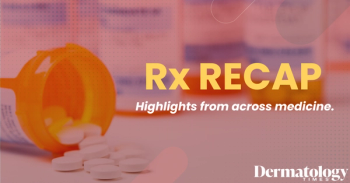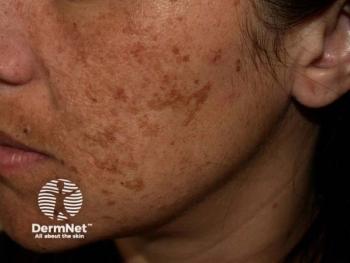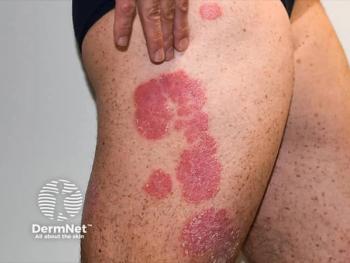
Late-Breaking Data: Lebrikizumab Demonstrates Efficacy in Patients With Skin of Color With AD
Key Takeaways
- Lebrikizumab showed significant efficacy in improving EASI and Pruritus NRS scores in patients with pigmented skin and moderate to severe AD.
- By week 24, 78.4% achieved EASI 75, and 54.1% reached IGA 0 or 1, with notable improvements in hyperpigmentation.
At RAD 2025, Eli Lilly revealed promising results for lebrikizumab in treating atopic dermatitis in patients with skin of color.
At the 2025
The open-label study (
"Skin pigmentation matters in evaluating patients with atopic dermatitis, because from a medical perspective, the disease presents differently in darker skin tones vs lighter (eg, redness can be more subtle, pigmentation more prominent, and diagnosis and evaluation more challenging). Additionally, in the next 20 years, people who identify as American Indian or Alaska Native, Asian, Black or African American, Native Hawaiian, or other Pacific Islander are projected to represent more than half of all Americans, which drives our urgency to invest in clinical research that helps address longstanding medical gaps in these populations. ADmirable is the first dedicated study to evaluate the efficacy and safety of Ebglyss in adult and adolescent patients with AD in these patients frequently underrepresented in clinical trials," said Anabela Cardoso, MD, senior vice president of immunology medical affairs at Eli Lilly and Company, in an interview with Dermatology Times.
The patients received lebrikizumab 250 mg (500-mg loading dose at baseline and week 2) subcutaneously every 2 weeks for 16 weeks. Then, from weeks 16 to 24, those who responded to treatment received lebrikizumab 250 mg once every 4 weeks; those with inadequate response continued with the dosage every 2 weeks.
Respondents were defined as having an Investigator’s Global Assessment score of 0 or 1 with a 2-point or greater improvement (IGA 0/1) or 75% or greater improvement in Eczema Area and Severity Index (EASI 75). The primary end point of the study was achieving an EASI score of 75 at week 16. Secondary end points revolved around safety and efficacy using PDCA Derm, assessing cutaneous postinflammatory hyperpigmentation and hypopigmentation.
Approximately 68.9% of patients began the trial with moderate disease (IGA = 3) with a mean EASI of 26.4 and an average Pruritus Numeric Rating Scale (NRS) score of 7. At week 16, EASI 75, EASI 90, and IGA 0/1 were achieved by 69.2%, 44.9%, and 44.9% of patients, respectively. This includes more than 88% of patients with the darkest skin tones (Fitzpatrick V and VI). Approximately 73% of respondents were able to switch to a once-monthly maintenance dose after 16 weeks.
Nearly 60% of patients observed a 4-point or greater improvement in Pruritus NRS. These numbers increased at week 24 with EASI 75, EASI 90, and IGA 0/1 achieved by 78.4%, 47.3%, and 54.1% of patients, respectively. Moreover, 61.5% of participants had a 4-point or greater Pruritus NRS improvement.
"This new data demonstrating improvement in signs and symptoms (including itch) through 24 weeks of treatment helps confirm the efficacy of lebrikizumab in patients with skin of color – a population for which data is often lacking. Being able to communicate to my patients that the treatment I am recommending has established efficacy and safety in populations that reflect their background goes a long way in establishing trust and encouraging adherence to therapy," said Andrew Alexis, MD, professor of clinical dermatology and vice-chair for diversity and inclusion at Weill Cornell Medicine, in a statement to Dermatology Times.
Additionally, 4-point or greater improvements in the Dermatology Life Quality Index were reached by 71.7% and 72.9% of patients at weeks 16 and 24, respectively. More than 64% of patients with hyperpigmented lesions and 25% with hypopigmented lesions showed improvement after 24 weeks. Most treatment-emergent adverse effects were mild or moderate, with only 1 reported case of conjunctivitis and injection site reaction. None of the adverse events were serious, and the drug did not need to be discontinued. This safety profile is consistent with previous long-term trials of lebrikizumab, regardless of dosage and frequency.2
"Being able to communicate to my AD patients with skin of color that treatment with lebrikizumab has a high success rate in improving not only the signs and symptoms of AD, but also the sequela of postinflammatory hyperpigmentation, is extremely impactful and aligns with their treatment goals," said Alexis.
Overall, patients with skin of color and moderate to severe AD severity responded well to lebrikizumab after 24 weeks, with improvements in symptoms such as itch and hyperpigmentation. Response was noted as early as week 16 and continued to improve throughout the trial with a favorable safety profile.
"These new, 24-week data from ADmirable—the first dedicated study for evaluating the efficacy and safety of Ebglyss in adult and adolescent patients with pigmented skin and moderate-to-severe atopic dermatitis—reinforce the efficacy and safety of Ebglyss as a first-line biologic, following prescription topicals, with once-monthly maintenance dosing after the 4-month initial dosing for adults and adolescents, regardless of skin tone. These add to the robust and extensive data supporting Ebglyss's value for a broad range of patients with moderate to severe atopic dermatitis," Cardoso concluded.
References
1. Alexis A, Moiin A, Waibel J, et al. Efficacy and safety of lebrikizumab in adult and adolescent patients with skin of color and moderate-to-severe atopic dermatitis: final 24-week results from the phase 3b, open-label ADmirable study. Presented at: 2025 Revolutionizing Atopic Dermatitis (RAD) Conference; June 6-7, 2025; Nashville, TN.
2. Lilly's Ebglyss (lebrikizumab-lbkz) single monthly maintenance injection achieved completely clear skin at 3 years in half of patients with moderate-to-severe atopic dermatitis. News release. Eli Lilly. March 7, 2025. Accessed June 7, 2025.
Newsletter
Like what you’re reading? Subscribe to Dermatology Times for weekly updates on therapies, innovations, and real-world practice tips.


















